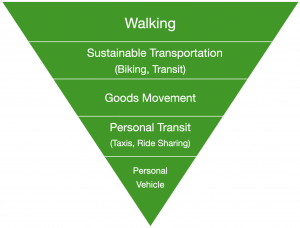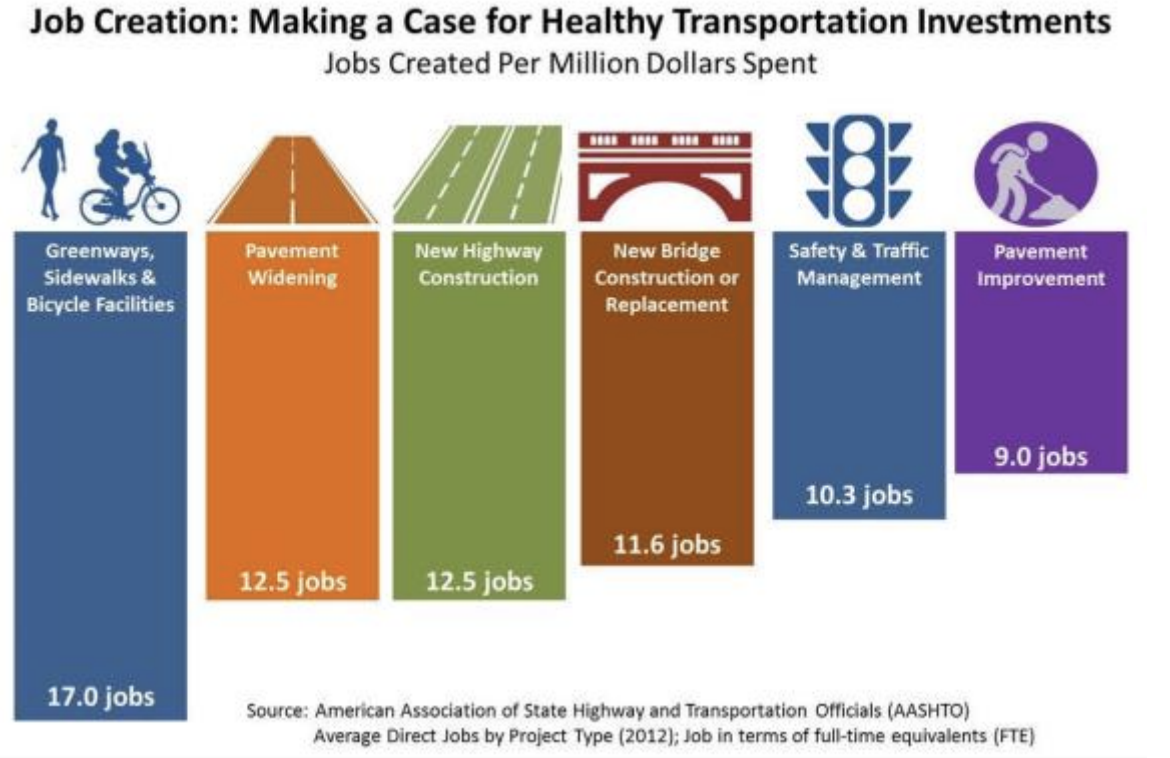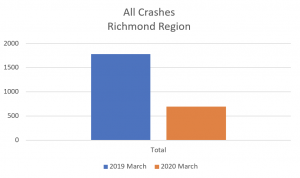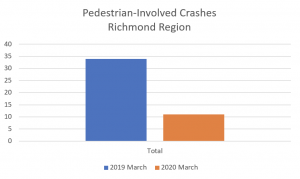What Coronavirus reveals about biking and walking in the region
By: Louise Lockett Gordon, Bike Walk RVA Director
During this public health crisis when practicing social distancing is critical to flattening the spread of Coronavirus/COVID-19, many parts of our everyday lives have been impacted – including transportation. Organizations have closed doors and many continue to operate virtually. Those of us who are non-essential workers are staying home, reducing transit ridership and personal vehicle travel. As our normal operations have been literally brought to a halt, there is an opportunity to reflect on what we can do now and after “living in the time of Coronavirus” to make our region resiliently active.
Biking and walking are the keystones of physical activity
Gyms are closed, stores are closed, theaters are closed, schools are closed. Couch surfing through waves of Netflix shows can only get one but so far before cabin fever sets in. So what are people doing? They are out on streets and trails walking, running, and biking. So much so that TikTok videos by the truckload proclaim that dogs no longer love their people, exhausted by the six walks a day they are being dragged on because their owners need to get some air. Biking and walking (and running) are our default activities to help keep us physically and mentally fit. We need more sidewalks, bike lanes, and multi-use paths throughout the region to provide space to be active, healthy, and to get us where we need to go (when we’re allowed to go places again).
Open Streets can provide a solution to lack of access to open space
Recently, localities in the region have restricted the use of team sport facilities like basketball and tennis courts and limited parking access to some parks in an effort to reduce high volumes of people congregating and not adhering to social distancing. Everyone doing their part to follow CDC guidelines so we can protect community health is important, but this also creates an opportunity to provide more access to open space, rather than less, to alleviate congregating. By providing more spaces for people to work out their home-all-day-wiggles, we can flatten the likelihood of huge park attendance and protect mental health at the same time.
The region is already acquainted with Open Streets programming. Sports Backers organized RVA Streets Alive! between 2013 and 2015 to demonstrate how cities and counties can close off a street to vehicular traffic for a day to provide more space for people to be active. In this moment, opening neighborhood streets to biking/walking activity only can be done on a less grand scale, simply affording people nearby the opportunity to be active in a car-free environment.
Let’s not forget several areas that do not have close access to parks. Open Streets in key areas can ensure a space for physical activity where these spaces don’t presently exist. In this stressful time, localities can provide some pressure relief.
Update May 2020: Dozens of cities across the country have implemented Open/Slow Streets in response to the physical distance need presented by the pandemic. Louisville, KY has opened 11 miles of parkway streets. Minneapolis has 11 miles in three “healthy” loops designed for both transportation and safe recreation. Particularly notable is Oakland, CA, which is rolling out 74 miles of slow streets over time in an 11 x 3 mile area.
Less vehicular travel = fewer crashes
When you look at DMV crash data for the Richmond region and compare the month of March last year to this year, roadway crashes have decreased from 1,781 in March 2019 to 692 in 2020. That is a 61 percent reduction in crashes overall. Pedestrian-involved crashes dropped from 34 to 11 in the same time period, representing a 68 percent reduction in pedestrian crashes. The Science Museum of Virginia has similar findings.
 What does this mean for localities who have, or are looking to adopt, a Vision Zero strategy aimed at eliminating traffic deaths and serious injuries? To get to the root of the issue, we must reduce crashes – which means switching more trips out of vehicles and over to biking, walking, and transit. Putting people first over fast vehicle through-put will take leadership to rebalance transportation priorities and to commit to the required budgeting.
What does this mean for localities who have, or are looking to adopt, a Vision Zero strategy aimed at eliminating traffic deaths and serious injuries? To get to the root of the issue, we must reduce crashes – which means switching more trips out of vehicles and over to biking, walking, and transit. Putting people first over fast vehicle through-put will take leadership to rebalance transportation priorities and to commit to the required budgeting.
Biking and walking projects can be part of our “bounce back” strategy
As our local leaders wrestle with revising revenue projections and working through their budget processes this April and May, tough decisions will be made. When it comes to deciding which transportation projects to prioritize, we know this: biking and walking projects have the better return on investment.
 For every million dollars spent on the project, research shows that greenway, sidewalk, and bicycle facility projects create 17 direct jobs on average, compared to just nine jobs for pavement improvement projects.
For every million dollars spent on the project, research shows that greenway, sidewalk, and bicycle facility projects create 17 direct jobs on average, compared to just nine jobs for pavement improvement projects.
Trails like the Indianapolis Cultural Trail have led to a minimum of $1 billion in economic benefit. Activity on the Virginia Capital Trail has boosted revenue at local businesses along the trail and sparked development at Rocketts Landing. Maintaining dedicated funding for sidewalk infrastructure and committing regional revenue to projects like the Ashland to Petersburg trail can boost immediate job creation and set the region up for economic benefit in the long term.
Making lemonade out of lemons
Not since the 1918 influenza pandemic have we had to implement significant restrictions on the movement and gathering of people like this in the United States and worldwide. What we do now and in the months to come will reveal who we are and what we value. Let’s seize the moment to create a resiliently active region through our funding and leadership.
###

